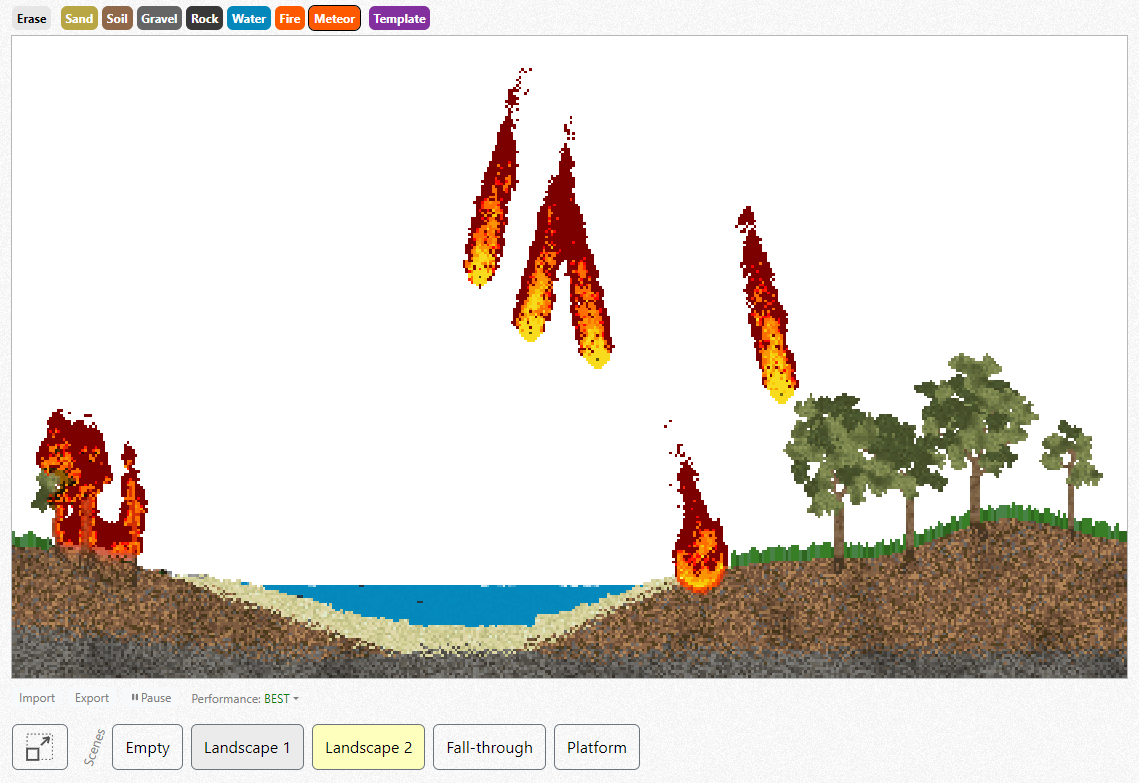💡 Note: Sand Game JS is now being developed as part of the Sand Saga codebase since the release of SandSaga.com on April 1, 2024.
Sand Game JS is a fast and powerful falling-sand game engine for desktop & mobile browsers. It allows players to experiment with various elements, such as sand, soil, water and fire. It is primarily tested on Google Chrome and Google Chrome for Android. WebGL 2 is utilized for fast rendering.
You can play it here: https://sandsaga.com
The engine itself contains 5 scenes and some tools (see image below). But it allows for defining custom elements, tools, templates, scenes, objectives, and customization of various settings.
Engine web page: https://harag.cz/app/sand-game-js
Dev build: https://harag.cz/app/sand-game-js?stage=dev (with test tools enabled, sometimes with experimental changes)
Note: Sand Game JS is a browser-based successor to Sand Game 2, which was originally developed in Java (JavaFX) from 2014 to 2016~17.
With grass and trees growing on soil, and other natural processes, it offers a unique experience.
Read the license before forking!
Install Node which contains npm.
npm install downloads dependencies..
npm run build builds the library to dist.
npm run dev builds the library, then keeps rebuilding it whenever the source files change using rollup-watch.
npm test builds the library, then tests it.
A web server is needed to open index.html correctly.
- IDEs like IntelliJ IDEA start web server automatically.
npm run servestarts web server from command line, http://localhost:3000
- Use
alt+ctrl+shift+middle mouse buttonto debug an element. - Stop processing using
ctrl+enterand then press (or hold)ctrl+spacefor running one simulation iteration.- Alternatively
ctrl+shift+spacewill run the specified number of iterations – at once, without rendering and delays.
- Alternatively
- Global variables, accessible from browser console:
sandGame,brushes
